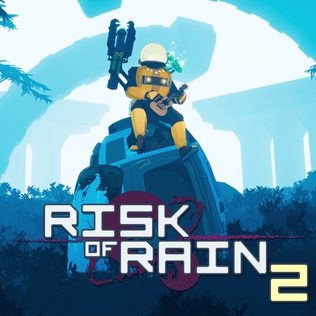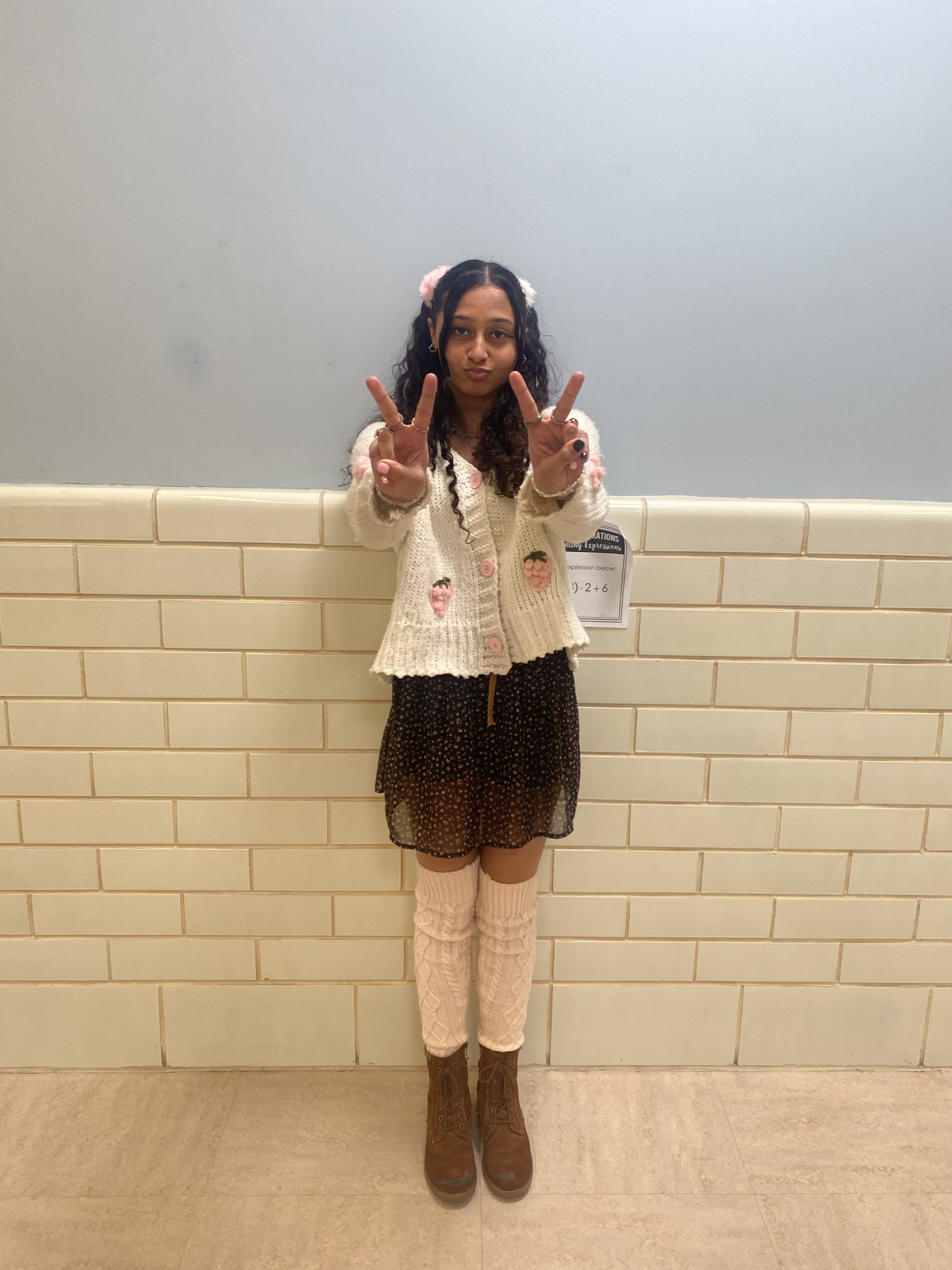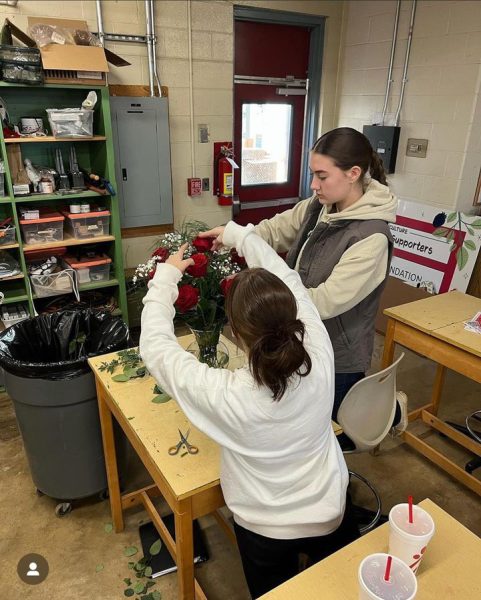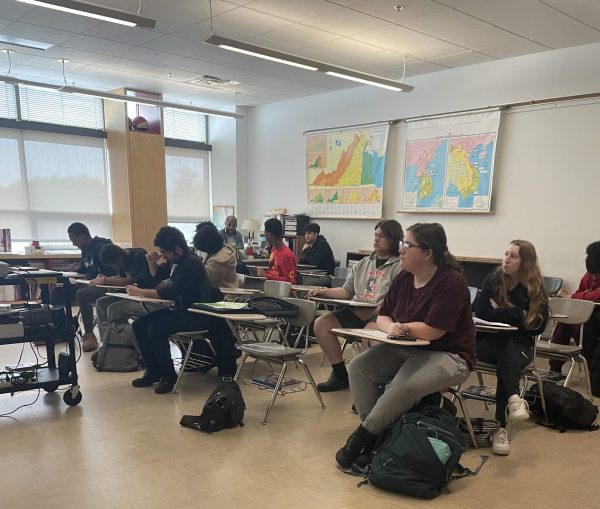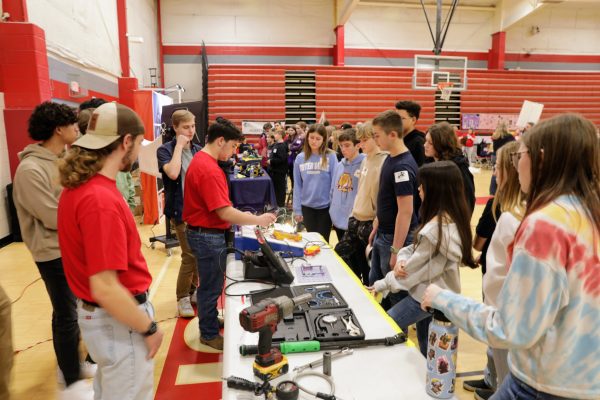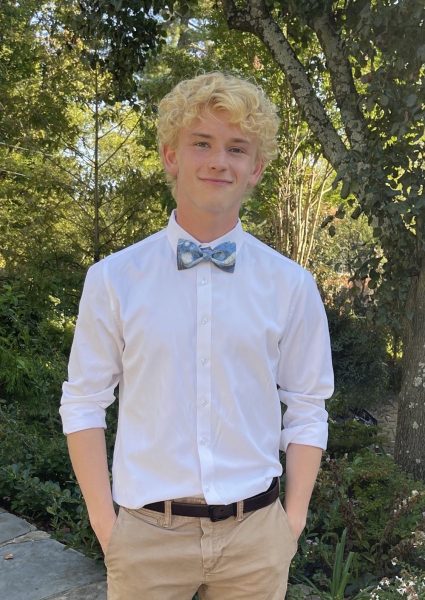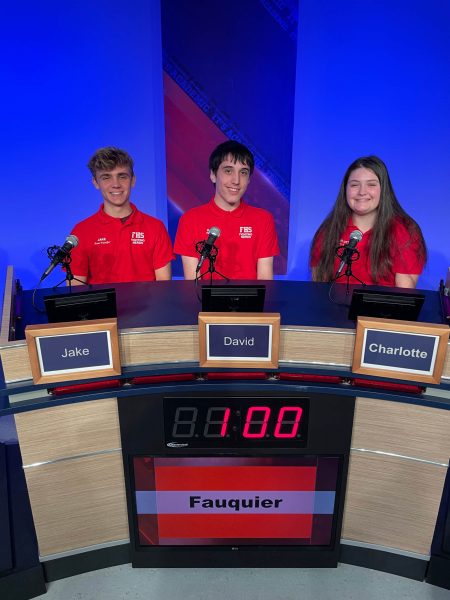Legal, dangerous, potentially lethal: Abuse of prescription drugs raises alarms
April 18, 2016
You hear about illegal drug abuse all of the time—on the news, at school, from the media. However, the misuse of legal drugs isn’t as widely covered, despite the fact that teenagers are one of the most at-risk groups for prescription drug abuse.
The 2014 National Survey on Drug Use and Health found that recreational prescription drug use among adolescents 12 to 18 and young adults 18 to 25 is the most prevalent form of drug abuse, after alcohol and marijuana. In addition, a study by Dr. Jennifer R. Havens of the Center on Drug and Alcohol Research shows that prescription drug abuse among those under age 18 increased 212 percent between 1992 and 2003; the abuse of these drugs is also more prevalent among rural adolescents.
The PRIDE Survey, which asked students in Fauquier County grades 7-12 multiple questions about drug use, found that, after alcohol and marijuana, prescription drugs are the most popular drug among 12th graders; 175 students reported abusing prescription drugs in the last 30 days. The use of these substances often takes place way from school grounds; nonetheless, many students use these drugs, both recreationally and in order to deal with the course load they’re given at school.
According to sophomore Sam Lader*, the most commonly abused prescription drug in the area is Adderall because of its availability.
“I would say the one that’s most enjoyed, however, is definitely painkillers,” Lader said. “Painkillers are much harder to get a hold of, specifically because they are opiates, and so they don’t want you to have them—especially kids our age.”
Lader first used opiates for non-medical purposes in September, 2015, as a way to relax, and has since used Oxycodone, Vicodin, Percocet and Hydrocodone, as well as other non-opiate medications, like Adderall and Xanax. One of the main reasons opiates are so ‘relaxing’ is because they slow down one’s heartbeat and breathing and can cause drowsiness, dizziness, nausea, and even unrousable unconsciousness.
“Opiates can make you forget entire days,” junior Tom Jasso* said. “You lose control of yourself when you’re on them, and it’s just not fun. They’re easy to develop a dependency for and very, very easy to kill yourself with.”
Jasso first tried prescription drugs his freshman year but didn’t experiment with downers until six or seven months ago when he tried Xanax at a party simply because he was interested.
“It was pleasurable the first time, but I prefer stimulants more often,” Jasso said. “Xanax is a downer, like opiates, so my opinion on them is the same. All other benzos are essentially the same, if not worse for you, than Xanax, and with more extreme side effects.”
For many years doctors and pharmaceutical companies gave out prescriptions for narcotic painkillers without much consideration for the drugs’ potential for abuse. In 2014, the DEA started restricting these drugs more heavily—and as a result many people addicted to painkillers turned to heroin as a cheap, more accessible opioid alternative.
“If you do get addicted to them, it usually leads to a heroin addiction because opiates and heroin are one and the same,” Lader said. “That’s a huge problem in Warrenton because you have all of these kids that start out as pillheads in high school, and then they turn into full-blown heroin addicts the minute they get out.”
In addition to opiates, other prescription drugs, like amphetamines and muscle relaxers, are popular among high school students. Some students use the stimulating effects of amphetamines (usually ADD medicine) as a way to handle their workload.
“I got some Adderall from someone at the end of my freshman year,” senior Joe Fluke* said. “I took it then intending to use it as a study aid, but it didn’t really work as I expected it to in the ‘speed’ sense. It allowed me just to be more focused and actually get stuff done.”
After that, Fluke began experimenting with other ADD/ADHD medications and continued to do so throughout his sophomore and junior years. After trying several different types of medicine, he began to question whether he might actually have ADHD and benefit from a prescription.
“Vyvanse is what I’m now prescribed for ADHD, which I was finally diagnosed with back in October,” Fluke said. “Now that I have my prescription, all of my grades have significantly risen, and I’ve improved in all academic areas.”
According to Fluke, the most popular amphetamines that are used recreationally in the area are Adderall and Vyvanse.
“A lot of people will take them recreationally just to get the euphoric feeling, the energy, and the focus—you know, stay up all night and study for midterms,” Fluke said. “But there’s also some people who definitely exhibit symptoms of ADHD who I think are self-medicating without a prescription, which is what I sort of accidentally did before it led me to realize I might actually have ADHD.”
Taking amphetamines without a prescription (or even with one, if the prescription isn’t used appropriately) can be dangerous. Short term side effects of amphetamine use include an increased heart rate and possibly abnormal palpitations; they increase blood pressure and body temperature and can cause jitteriness, dizziness, stomach cramps, irritability and aggression. Coming down from an amphetamine high often causes one to “crash,” which can lead to temporary mood swings and depression. In addition, taking any type of speed reduces one’s need to sleep, which can lead to disrupted sleeping patterns.
Jasso, who often takes amphetamines recreationally, enjoys them but said that the underlying anxiety that he usually feels while on them is occasionally overwhelming.
“Sometimes I get jittery and uncomfortable,” Jasso said. “They help stimulate me, help me create things and concentrate, but they can make me feel sort of anxious, and that can make the experience less positive sometimes.”
School Resource Officer Lieutenant Sal Torelli said that, although some students abuse prescription drugs, it isn’t as much of a problem in high school as in colleges. Still, he maintains that it’s an issue that needs to be addressed.
“It’s dangerous to take a prescription that doesn’t belong to you,” Torelli said. “You’ve got to think about it—these drugs are given to a certain person to treat a specific illness. If it’s not prescribed to you, then you don’t need it.”
*student sources’ names have been changed to protect their identities.


